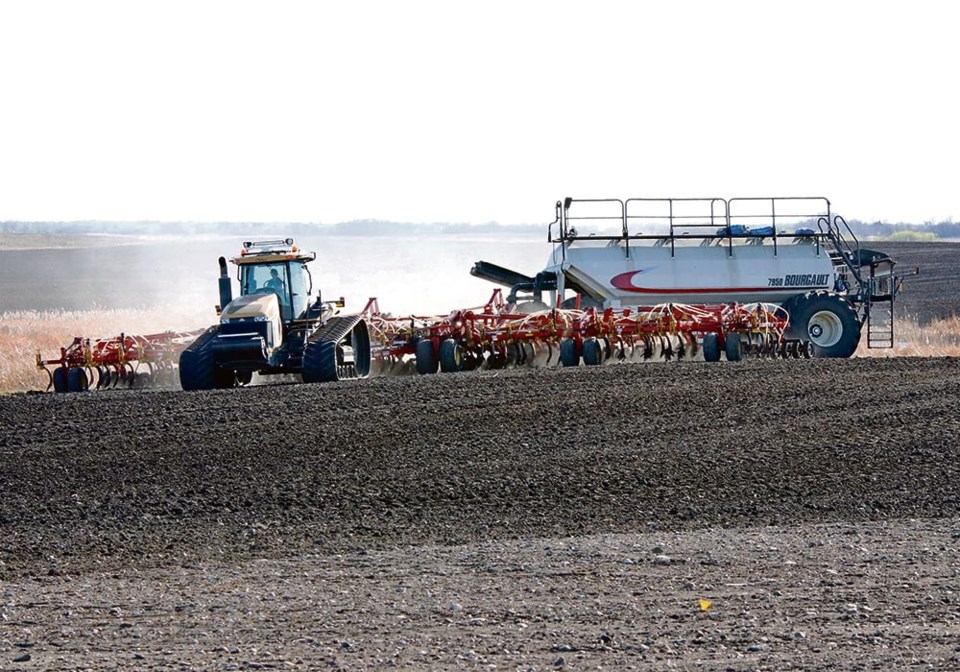OTTAWA — The head of the world’s largest agricultural retailer said farmers can meet the challenge of providing enough food for the world’s growing population and do it sustainably.
But they can’t do it alone.
Ken Seitz, chief executive officer of Nutrien, said sustainability and increasing yields are not mutually exclusive.
“We need to dispel this belief if we are to move toward a sustainable solution for feeding a growing planet,” he said.
He told the Canadian Crops convention that government and industry must give farmers what they need to reach the objectives society has set.
Climate change is redrawing the food production map, he said. For every degree increase, corn and rice production in traditional areas will fall 7.4 and 3.2 percent, respectively. As northern areas warm, more of Canada’s north might be suitable for production.
However, the consequence of plowing forests and wetlands is the release of 15 gigatonnes of carbon.
“Of all the options available to us only those that growers can adopt without taking on significant costs or risks will move us closer to our objectives of higher yields with lower environmental impacts,” he said.
There is a cost to feeding 10 billion people by 2080.
“We need to rethink food production on a global scale,” said Seitz. “The good news is we have done this before.”
While Canadian farmers, and others, have adopted science-based practices and technology for productivity gains over the last few decades, other farmers are constricted by the cost. Agricultural economies in China, India and Africa are still in development.
Seitz said the constant over-application of nitrogen relative to achieved yield in India, for example, is because of a combination of government subsidies and a lack of precision agriculture.
But he said nitrogen use is the low-hanging fruit in the sustainability debate.
“At Nutrien, we see huge promise in advanced analytics, AI, digital agronomy, precision agriculture, biologicals, and sustainable practices that enhance the efficiency of nutrients while boosting productivity and meeting environmental goals,” he said.
The company launched a carbon pilot that offers financial incentives for positive, measurable performance of practices that reduce emissions and sequester carbon. Nutrien partnered with Maple Leaf Foods to work with SustainCERT to measure and validate outcomes.
Last year, the pilot included 750,000 acres in North America and is launching in Australia and Brazil.
The program includes strategic field planning, precision crop input support, data collection and voluntary carbon market consultation.
“We will need an entire ecosystem of products, services, regulations and resources comprised of industry, governments and academia,” Seitz said. “Only then will all growers have the tools they need.”
He said the current government approach is on only the cost side of the carbon equation.
“Would it not make more sense if producers were judged on the net emissions of their operations, including negative emissions?” he said. “What if we created a globally accepted definition of regenerative ag, along with a system to measure, report and verify the environmental outcomes?”
He said the world will not regulate its way into feeding the world more sustainably.
In an interview after his speech, Seitz said Nutrien’s pilot project is designed to find the best combination of practices for growers on their land so they can participate in the carbon market with high quality credits.
“As the world looks to decarbonize, and I think this is coming, maybe fast and furious are the words, the evolution of carbon markets and the value of carbon needs to come along as well so that the incentives are there for the grower to deploy some of these best practices, take that risk on the farm,” he said. “What we’re showing is that with the overall best agronomic solution there is a pathway to improve yields (and) improve the sustainability outcomes.”

